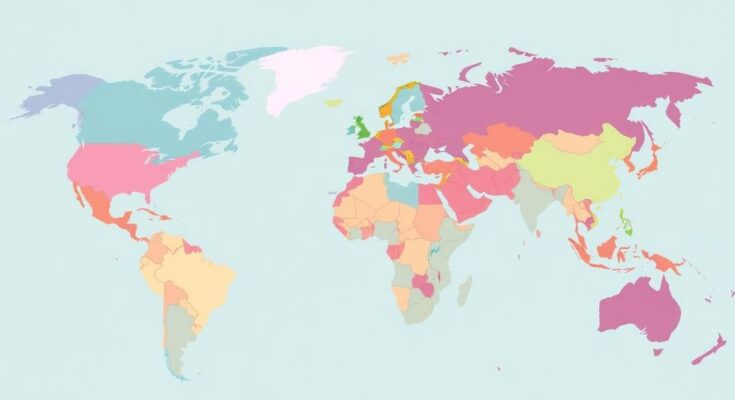The 2024 World Air Quality report reveals Chad and Bangladesh as the most polluted countries, with Delhi, India, being the most polluted capital globally. Just seven nations meet WHO air quality standards, while India ranks fifth in pollution levels despite having the most cities in the top 100. Regional cooperation is essential to tackle transboundary pollution, as highlighted by experts in the report.
In the 2024 World Air Quality report by IQAir, Chad and Bangladesh emerge as the most polluted countries, while Delhi, India, is identified as the world’s most polluted capital city. Alarmingly, only seven countries—Australia, New Zealand, the Bahamas, Barbados, Grenada, Estonia, and Iceland—are reported to meet the World Health Organization’s air quality guidelines. The report highlights that a significant portion of global pollution comes from the Global South, especially Asia.
The data reveals that out of the 100 most polluted cities, 74 are located in India. Despite a slight improvement from the previous year, where 83 cities featured, India’s national pollution level still ranks fifth globally, behind Chad, Bangladesh, Pakistan, and the Democratic Republic of Congo. The average PM2.5 levels in India are ten times higher than the WHO’s recommended limit, underscoring severe air quality concerns within the country.
Only 17% of nearly 9,000 cities surveyed globally adhere to WHO’s air pollution standards, reflecting a global crisis in air quality. The pollution primarily affects urban areas of the Global South. Despite efforts to gather air quality data, Africa remains under-reported, with only 24 out of 54 nations reporting data this year, a notable improvement since the initial reports.
US governmental decisions have further hindered global air quality monitoring. The closure of US embassy monitoring stations and the deletion of 17 years of air quality data from the airnow.gov database adversely affect pollution surveillance worldwide. This decision is likely to impede effective public health measures, particularly in developing nations that rely on accurate data for policy formulation.
India’s extensive monitoring network captures pollution across various terrains, leading to a lower national average compared to countries with limited monitoring. Experts suggest that inaccuracies in pollution representation arise from urban-centric data tracking in countries like Pakistan and Bangladesh. Additionally, Chad’s return to the pollution rankings highlights ongoing challenges in obtaining reliable data from several regions.
The report indicates a need for regional cooperation in South Asia to address transboundary air pollution, with pollution sources shared across national borders. Experts advocate for a multilateral approach to air quality management, emphasizing the interconnected nature of pollution among India, Pakistan, Bangladesh, and Nepal.
Despite its expanded monitoring infrastructure, Delhi’s air pollution has indeed worsened, with PM2.5 levels rising to over 108 micrograms per cubic meter, attributed to vehicular emissions and construction activities. Northern India, particularly the Indo-Gangetic Plain, remains a significant pollution hotspot due to geographical factors that exacerbate smog conditions during winter months.
The report also touches upon trends in other countries, noting a decline in China’s air pollution levels in over 320 cities but a rise in 130 others. Meanwhile, Indonesia continues to struggle with high pollution levels even as it plays a critical role in clean energy production. In Vietnam, air pollution has dire repercussions, including economic losses significant enough to impact GDP.
Furthermore, Hawaii is recognized for exceptional air quality, with Honoka’a noted for having a PM2.5 average of merely one microgram per cubic meter. The increasing awareness and initiatives to combat air pollution underline the urgent need for collective action globally to tackle this pervasive environmental crisis.
The World Air Quality report for 2024 underscores a critical global air pollution crisis, with only seven countries meeting WHO standards. Chad and Bangladesh are highlighted as the most polluted, and Delhi emerges as the most polluted capital. The findings illuminate the urgent need for collaborative efforts in addressing transboundary air pollution, particularly in South Asia, where ineffective monitoring and limited data reporting exacerbate the problem. Solutions must involve multilateral cooperation to effectively alleviate pollution levels and protect public health.
Original Source: healthpolicy-watch.news




